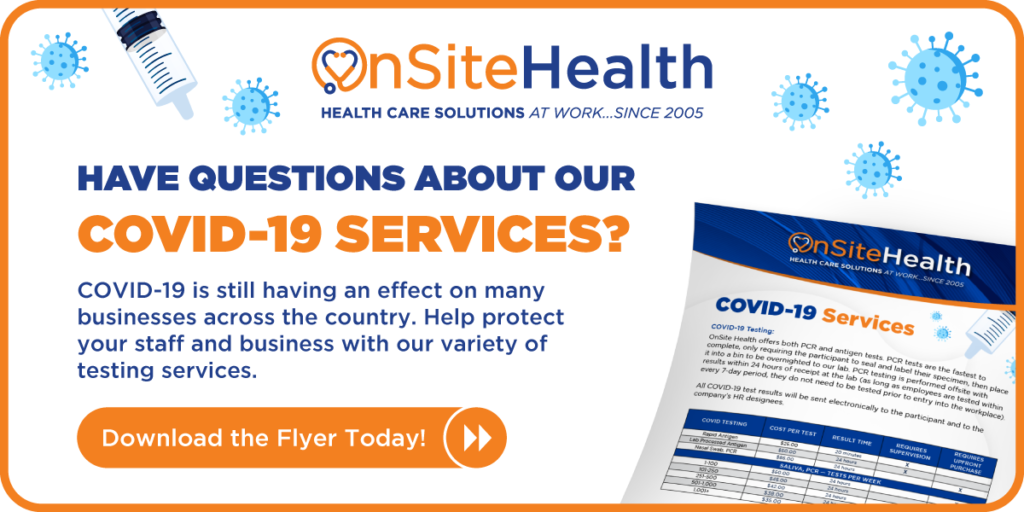As we continue to reintegrate working from the office setting back into our daily lives, there’s really no debate that returning employees to the workplace during and after the COVID-19 pandemic won’t be as simple as announcing a reopening or return-to-work date and getting right back into business as usual. Not only have many workplaces changed temporarily, but they may be different for the long-term, even beyond the approval of a yet-to-be-approved vaccine. The details of each employer’s plan to return to work may all look distinctive from each other, but there are some commonalities every business owner should keep in mind while drawing up their plans.
Wonder What OnSite Health Can Do For You?
>>> Check Out Our Health Services ROI Fact Sheet <<<
The Occupational Safety and Health Administration (OSHA) has developed a three-step process to assist both employers and workers in safely reopening business and returning to work:
Phase 1:
Consider making telework available when possible and feasible. For employees who do return to the workplace, consider limiting the number of people in the workplace as a measure of maintaining social distance. Also, it would be wise to make accommodations for workers at higher risk such as those with underlying health issues.
Phase 2:
Businesses continue telework, but non-essential travel can resume. Limitations on the number of people in the workplace may be eased, but social distancing measures should be maintained if possible. Continue to make accommodations for at-risk workers.
Phase 3:
Businesses resume unrestricted staffing of work sites.

Now, before you move from one phase to the next, it’s worth considering how to make the process as safe as possible. Employers must ensure that the workplace is as safe as possible. Measures may include:
- Implementing employee health screenings,
- Developing an exposure response plan,
- Providing personal protective equipment (PPE),
- Detailing cleaning procedures,
- Establishing physical distancing measures,
- Limiting business travel, and
- Define customer and/or visitor protocols.
When putting together your recall procedures, plan for how and when employees return to the worksite. If every employee were to return on the same day, this could be overwhelming and potentially unsafe. Consider returning to work in phases, creating a plan for high-risk employees, and notifying the state unemployment office that you have recalled employees (this will help save on unemployment taxes).
Once employees start returning to work, you will likely need to update or create policies to reflect the new normal. These may include adjusted paid-leave policies, relaxed attendance policies, and more flexible scheduling options. Finally, to ensure safety, consider offering on-site health screenings to your employees. This will help make the return-to-work process seamless and safe.
With an on-site nurse, companies will receive on-site assistance with navigating return to work policies and the health and safety guidelines that come with it. An on-site nurse is your helping hand when it comes to employee health, safety, and health protocol, and more! If you require any assistance or consultation as you design and execute your organization’s return-to-work plan, please feel free to reach out to OnSite Health to learn more. Help is just a phone call away!

